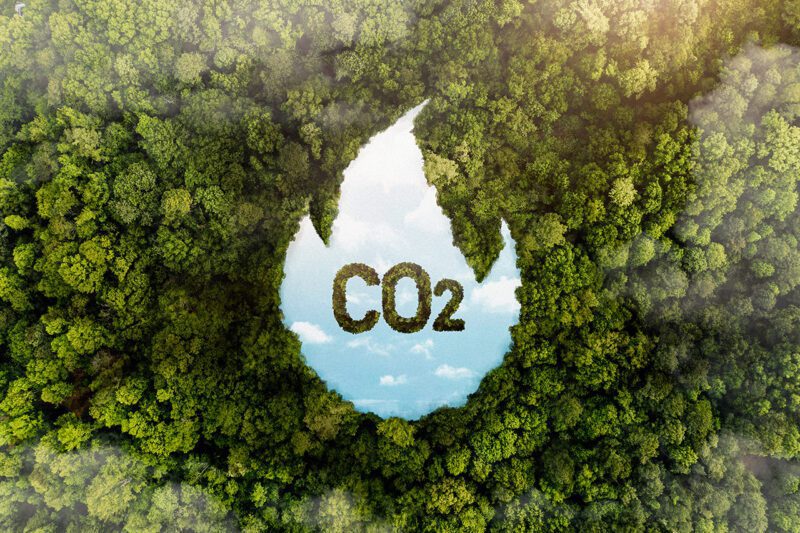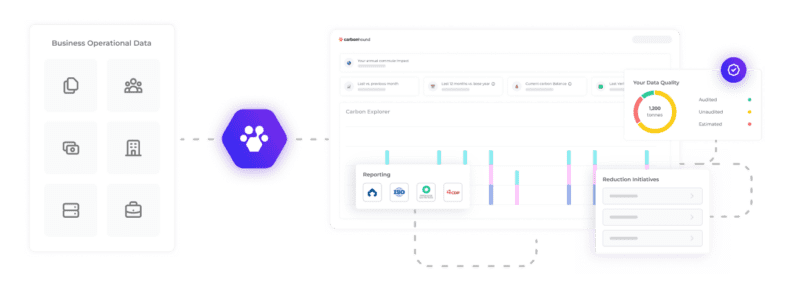The Algorithmic Classroom
South Korea’s ambitious experiment with AI in classrooms holds lessons for the world
How Carbonhound is Leading the Charge for Truthful Climate Reporting

Claims of carbon neutrality by brands have become all too common, often leading to skepticism rather than surprise. A prevalent form of greenwashing has emerged where companies assert their ‘carbon neutral’ status, relying solely on carbon offsets without making substantive changes to their operations. Yet, the tide is turning, with accountability on the rise. For instance, Delta Air Lines is embroiled in a lawsuit seeking damages in excess of $1 billion, while FIFA has been chastised by Swiss regulators for deceptive claims of carbon neutrality during the 2022 Qatar World Cup. This evolving landscape has seen a surge in demand from informed consumers for greater transparency in how companies are truly impacting the planet with their spending.
Carbon reporting is increasingly recognized as a crucial instrument for gauging a company’s environmental footprint — a vital step on the path to carbon neutrality. In this interview, Sanders Lazier, CEO of Carbonhound — a pioneering carbon management software firm from Canada — delves into the strategic use of carbon reporting. He details how it can help brands not only achieve carbon neutrality but also forge authentic and credible climate narratives, thereby shaping their green branding initiatives with integrity.
Carbonhound is dedicated to standardizing carbon reporting for businesses, regardless of their size. Achieving carbon neutrality is a comprehensive journey that begins with sourcing organic materials and includes managing e-waste more effectively. Lazier points out that brands are gradually adopting more responsible practices, such as endorsing fair trade and using organic materials, in addition to embracing sustainable packaging solutions. These incremental steps are all aimed at the broader objective of minimizing their environmental impact and reducing their carbon footprint globally.

“Identifying the primary sources of emissions is critical,” Lazier asserts. “A company must first identify which activities contribute the most to greenhouse gas emissions in order to reduce it.” While carbon reporting offers unparalleled precision in tracking emissions, it is not without its challenges, particularly for small to medium-sized enterprises. These businesses often struggle with the intricacies of data collection, emission calculations, and the subsequent actions required. Moreover, the need for skilled professionals trained in carbon reporting adds an additional layer of complexity and cost, which many are not prepared to meet. This gap in the market calls for carbon reporting solutions that are both user-friendly and affordable, allowing for swift adoption and learning by companies of all sizes.
Carbonhound has revolutionized the carbon reporting process, making it more accessible than ever. The company’s goal is to empower businesses of all sizes to effectively confront the climate crisis, facilitated by their customer-centric pricing model. With a design that democratizes carbon management, Carbonhound’s platform is ideal even for those with no background in carbon reporting. The user-friendly system features an intuitive interface, underpinned by a comprehensive calculation methodology that seamlessly integrates automated data collection for Scope 1, 2, and 3 emissions.

Image Courtesy of Carbonhound
Carbonhound is committed to fostering an environment of support and understanding for its clients, as encapsulated by Lazier’s words: “We try to provide a non-judgmental zone for our clients to help them understand where they are at the present through the lens of carbon emission because at the end of the day, carbon is cost.” He underlines the company’s dedication to guiding businesses on their sustainability journey, with the aim of equipping them to take proactive steps towards a sustainable future. “Then our mission goes to empowering them to take the first few steps to become sustainable in a holistic way in the next 30 years,” Lazier articulates, spotlighting the long-term vision Carbonhound holds for its clients.
 Empowered consumers are increasingly dictating the sustainability standards they expect from businesses, leveraging their buying power to promote carbon reporting. Research from The NYU Stern Center for Sustainable Business has quantified this shift, revealing a substantial market growth in sustainability-marketed products. From 2013 to 2018, there was a notable 50.1% increase, which further escalated to 54.7% between 2015 and 2019 across 36 different product categories. Even more telling is the rate at which these products are outpacing their conventional counterparts, with the 2019 report noting that sustainably marketed products expanded at a rate seven times faster.
Empowered consumers are increasingly dictating the sustainability standards they expect from businesses, leveraging their buying power to promote carbon reporting. Research from The NYU Stern Center for Sustainable Business has quantified this shift, revealing a substantial market growth in sustainability-marketed products. From 2013 to 2018, there was a notable 50.1% increase, which further escalated to 54.7% between 2015 and 2019 across 36 different product categories. Even more telling is the rate at which these products are outpacing their conventional counterparts, with the 2019 report noting that sustainably marketed products expanded at a rate seven times faster.
Lazier sheds light on this phenomenon: “In short, consumers these days want to buy products from brands labeled as sustainable. So, when a business uses data transparency like carbon reporting, it gets direct advantages in terms of getting more consumers due to the credibility of their labels.” This consumer-driven demand for sustainability is not just a trend; it’s reshaping how businesses approach their environmental reporting and branding strategies.
Transparent carbon reporting is becoming a non-negotiable element for businesses, especially in the realm of B2B relations. Lazier points out the tangible benefits: “There is a direct relationship between having data on greenhouse gas emissions and being able to win deals with large customers.” He cites real-world scenarios where Carbonhound’s services have been crucial: “We’ve had customers who came to us worried they would lose 70% of their market shares because their largest client demanded climate reporting.” Furthermore, he recounts, “Another client required our software to meet contract conditions that stipulated reporting their greenhouse gas inventory in alignment with international standards.” These anecdotes underscore the significant influence customers wield in compelling companies to adopt carbon reporting and develop strategies that actively reduce greenhouse gas emissions.
The traditional approach of brands telling sustainability stories, such as the use of organic cotton by fashion labels or furniture brands producing items from recycled materials, needs to evolve. “These narratives do not fully reflect the true scale of their environmental impact,” observes Lazier. In a landscape where heavyweight brands like Microsoft, Shell, and Disney claim their offerings are ‘climate neutral’, savvy consumers are increasingly demanding to see the data that supports these statements. It’s no longer sufficient for companies to self-identify as ‘sustainable’. The backlash, exemplified by the satirical ‘Mother Nature Parody‘ targeting the alleged carbon neutrality of the latest Apple Watch, underscores this shift. Such instances send a clear signal to all businesses: carbon reporting is not just a regulatory obligation; it is a critical component of establishing authentic and trustworthy sustainability narratives in the eyes of consumers.
Transparent carbon reporting is becoming a non-negotiable element for businesses, especially in the realm of B2B relations.
Lazier articulates a broader vision for carbon reporting, asserting its role beyond regulatory adherence: “Integrating carbon reporting into sustainability strategies is a shrewd business tactic. It’s more than compliance; it’s an avenue to bolster a brand’s image and garner positive public relations, all while contributing genuinely to planetary health.” He highlights the ripple effect of such initiatives: positive media attention can solidify a company’s stature as a sustainability pioneer, attracting customers and investors who prioritize environmental responsibility. This not only aligns with their ethical standards but also provides substantial financial returns, demonstrating the symbiotic relationship between environmental stewardship and business success.
Related Content
Comments
Deep Dives

Featuring
Clarisse Awamengwi
IE Correspondent
July 17 - 12:00 PM EST

Featuring
Russell McLeod
July 24 - 12:00 PM EST
RECENT
Editor's Picks
Webinars
News & Events
Subscribe to our newsletter to receive updates about new Magazine content and upcoming webinars, deep dives, and events.
Become a Premium Member to access the full library of webinars and deep dives, exclusive membership portal, member directory, message board, and curated live chats.
At Impact Entrepreneur, we champion fearless, independent journalism and education, spotlighting the inspiring changemakers building the Impact Economy. Diversity, equity, sustainability, and democracy face unprecedented threats from misinformation, powerful interests, and systemic inequities.
We believe a sustainable and equitable future is possible—but we can't achieve it without your help. Our independent voice depends entirely on support from changemakers like you.
Please step up today. Your donation—no matter the size—ensures we continue delivering impactful journalism and education that push boundaries and hold power accountable.
Join us in protecting what truly matters. It only takes a minute to make a real difference.
0 Comments